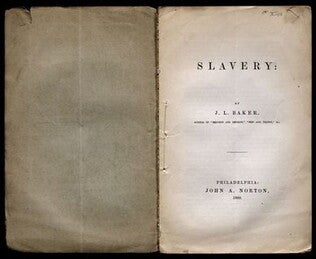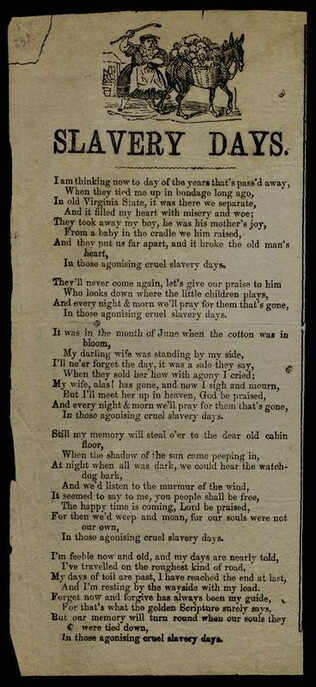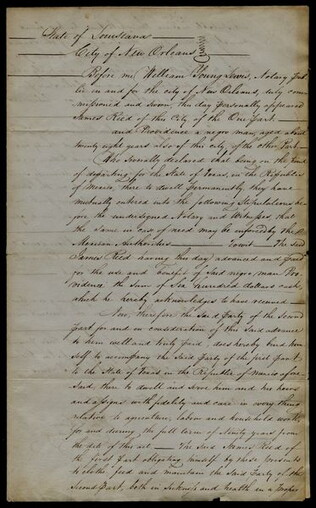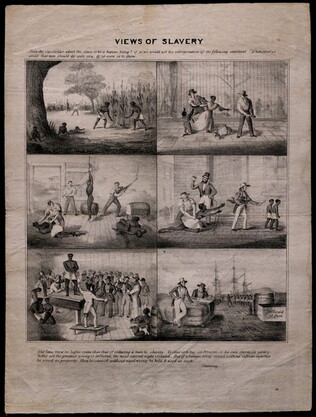1860
Baker, James Loring (fl. 1860)
Slavery.
Printed by John A. Norton. Claims that Anglo Saxon and African races can only coexist "in their present relative condition, but in no other way." Calls for free labor to gradually and permanently overtake slavery, but does not advocate slavery's...
GLC00267.210




